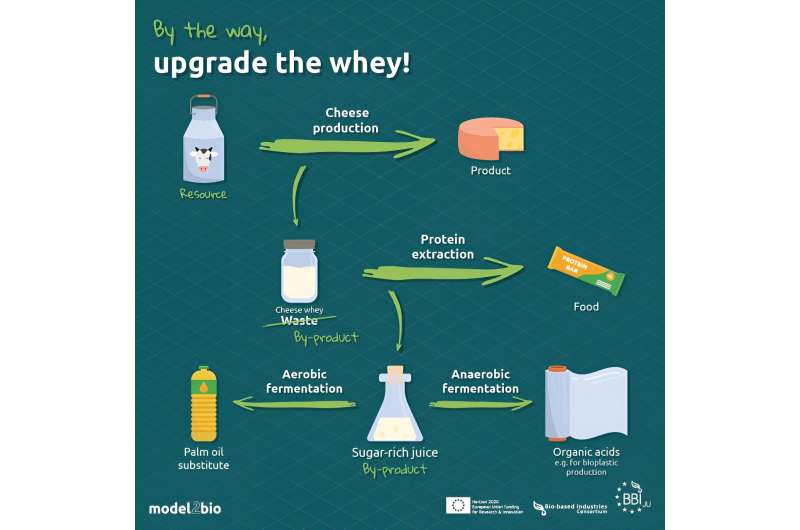This article has been reviewed according to Science X's editorial process and policies. Editors have highlighted the following attributes while ensuring the content's credibility:
fact-checked
proofread
A decision-support tool gives second life to food waste

European scientists, companies and clusters developed a decision-support tool that identifies what residues from food production can be recycled and how. The software supports a decision-making process that is not only based on technical criteria, but also on economic and sustainable aspects.
Millions of tons of food never reach consumers. In the case of fruits and vegetables, food loss amounts to 45%. The residues generated during growth, harvest, storage and processing are mainly landfilled or used as animal feed. However, production residues contain valuable industrial compounds that can be extracted.
The scientists, companies and clusters of the European research project Model2Bio developed a prototype for a decision-support tool. It helps agri-food companies, waste management companies and bio-industries make the most of our resources. Based on innovative mathematical models, the tool can predict second chances for agri-food by-products by answering three main questions:
- What can be generated from a residue?
- How can it be generated most economically?
- What are the environmental and social impacts of the suggested recycling routes?
With this information, the tool recommends the most economic and sustainable options to recover materials, chemicals, or energy from the residues of food production.
"Companies often don't know how to manage their residues or they have a usual way of managing them, such as using them as animal feed," says Tamara Fernández Arévalo, researcher at the non-profit technology center Ceit in Spain and coordinator of the Model2Bio project. "With this tool, we want to show companies that there are other ways to valorize their residues. These could include generating energy from biogas, or obtaining value-added products."
With a trend towards eating fewer animal-based products, new options for agri-food residues are needed. Instead of using it as animal feed, proteins can be extracted from cheese whey to supplement alternatives for animal products. The remains of this recycling process, a sugar-rich juice, can be fermented with microorganisms. In the presence of oxygen, the microorganisms produce oils with similar characteristics to palm oil. Organic acids are produced when oxygen is not available, which can be used to produce bioplastics, for instance.
The tool predicts which process is the most economic and sustainable and thus should be pursued. It thereby helps to generate products whose production and logistics do not exceed their market value and which increase our ecological foot print as little as possible.
Provided by European Science Communication Institute (ESCI)




















